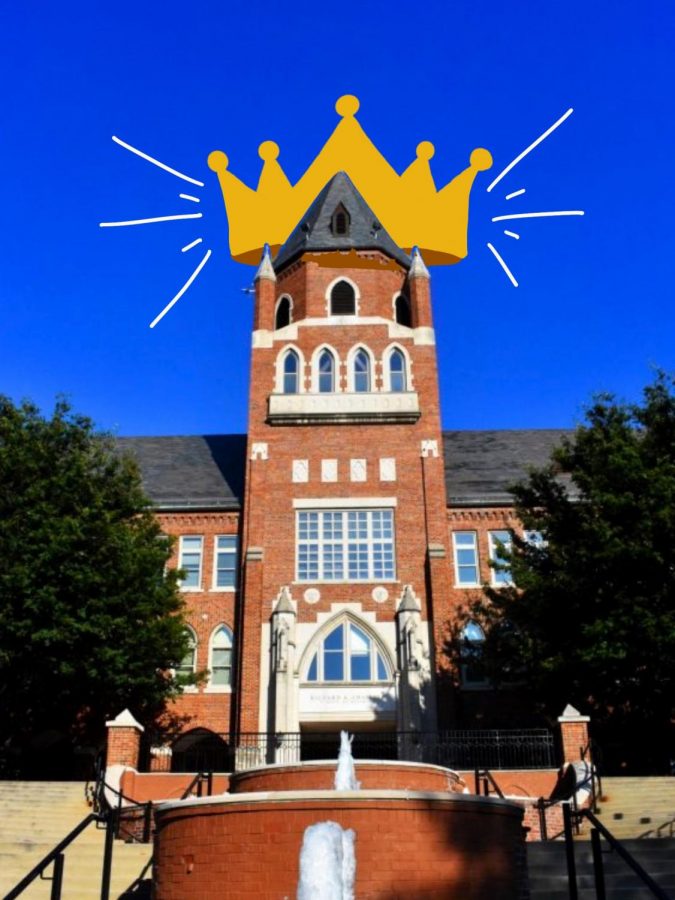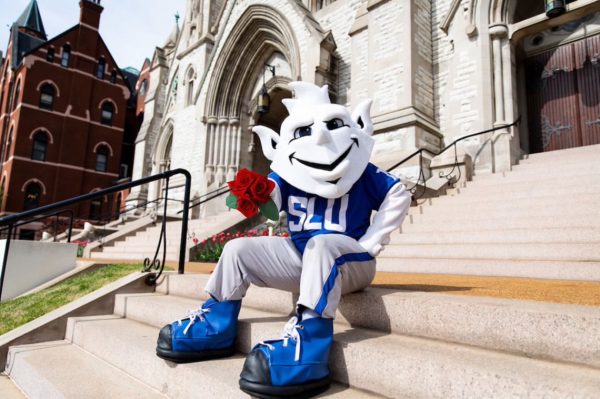The Truths of the Chaifetz School of Business and Their Impact on Students: A Response to “Non B-School Majors Beware, SLU Doesn’t Care”
After reading “Non B-School Majors Beware, SLU Doesn’t Care” written by Conor Van Santen, I was initially offended and quite taken aback by his allegations of unfair treatment and overall discrimination against the Arts and Sciences by the higher administration at Saint Louis University. As a Business School student studying finance, I am aware that the Business School seems to be favored by SLU, however this is not the case. Our programs and infrastructure are provided to us by generous donors that feel that the School of Business has made a powerful impact on their lives. That being said, I am writing a response to this initial opinion piece to set the record straight on where our funding comes from, how it is allocated to our student population and how the School of Business focuses on the greater good of SLU and the Saint Louis community.
First and foremost, the Chaifetz School of Business at Saint Louis University is more than just a “monument to capitalism, free trade and profit.” According to its mission statement, the business school “will provide a business education that emphasizes a global perspective grounded in theory, critical thinking and ethical leadership and which supports the application of these concepts through experiential and service learning.” As is the case with any institution of higher learning, there is always room for improvement. However, the business school has been able to successfully implement parts of its mission through its programs and work in the community while upholding the values of our Jesuit education.
For example, the business school offers the Service Leadership minor and houses the Habitat for Neighborhood Business, which are two distinct parts of the college that emphasize the business school’s involvement with the promotion of our Jesuit values within our local community. For those who are not familiar, the Service Leadership minor requires students to complete 200 hours of community service while reflecting on that service through three semester-long seminars that take place during a student’s time at SLU. The minor emphasizes reflection and critical thinking in response to each student’s service experience.
The Habitat for Neighborhood Business is a nonprofit housed in the Business School that partners with Saint Louis University students and volunteer businesspeople to help restore economic vitality to under-served neighborhoods through mentoring, networking and education for existing and aspiring minority entrepreneurs.
Even those that are not involved in those programs still have an opportunity to adhere to and celebrate the Jesuit values of SLU in a business setting. Part of the goal of our education in becoming future business leaders is an emphasis on the triple bottom line (TBL). For those who are not familiar, the triple bottom line, according to Investopedia, “believes that companies should commit to focusing as much on social and environmental concerns as they do on profits. TBL theory posits that instead of one bottom line, there should be three: profit, people, and the planet. A TBL seeks to gauge a corporation’s level of commitment to corporate social responsibility and its impact on the environment over time.” The business school is more than just money and success, it prides itself on shaping students into the ethical future leaders of tomorrow.
And while the “Centers of Distinction” are located in the Business School, these programs do not receive special funding from SLU. They have been built and dedicated to the Business School by university partners who get to choose where their donations go and in what capacity they would like to see them spent. These centers do not rely on funding directly from the university, therefore those students with problems regarding the funding of these programs should contact the companies supporting these centers directly in order to engage in a dialogue regarding their donations.
The Business School is home to some extra safety precautions that are not present in other schools, however this is not a direct action of SLU as an institution. The Business School has its own board of directors, with one member specifically that has a deep passion for promoting gun safety on college campuses. This member funded, out of their own pocket, the addition of the locks added at the bottom of the business school classroom doors. This specific board member also created the Chaifetz Safety Committee, who created the “instruction” cards that are posted in the classrooms of the business school. It is because of their jurisdiction in our school that they have made these changes and improvements. Again, it is important to emphasize that the implementation of the donation was decided upon by the donors and not SLU the institution itself.
With regards to monetary donations, the Business School has received a large amount of money to enhance the resources and programs available to its students. However, oversight over these monetary donations is deferred back to the prospective donor. This means that the donors themselves get to decide where their money goes and how it is utilized throughout the university. It is not an institutional decision that intentionally and directly discriminates against the College of Arts and Sciences or any other college on campus. In addition, the Business School is not the only school that has received a large amount of funding that has contributed to their success. The STEM programs at SLU have just invested millions of dollars to create the new “Interdisciplinary Science and Engineering Building.” This expansion greatly benefits the science majors that belong to the College of Arts and Sciences, and therefore it isn’t a totally unfair allotment of resources as Van Santen’s article makes it seem.
When examining the direct size between the Business School and the College of Arts and Sciences, one would note that there is a smaller student to teacher ratio presented in the College of Arts and Sciences than there is in the Business School. In the College of Arts and Sciences, there are 339+ professors and 2,301 students, meaning that there is one professor for every approximately 7 students, while on the other hand, in the business school there is one professor for every approximately 31 students (according to math I have done by dividing the amount of students by the number of professors in each school that is listed on the SLU website). That being said, there seems to be more room for one-on-one interaction between professors and students in the College of Arts and Sciences.
The College of Arts and Sciences isn’t the only school that produces writers, artists, journalists and politicians. In fact, the average person changes career paths 5-7 times throughout the course of their working life. Richard Chaifetz is a prime example of this someone who studied both the arts and sciences as well as business. In undergrad, he majored in psychology and chose to get an MBA later in his career. There is a stereotype in the Business School that most business majors are profit centered, but Richard Chaifetz is a prime example of this not being the case. We are well rounded students that really do focus on the well-being of the whole person.
This blending of colleges through our degrees leads me to my last and final point. In the end, we all chose to attend Saint Louis University to become more well-rounded individuals and to create a positive impact on the world we all share. Although, some of the arguments made in “Non B-School Majors Beware; SLU Doesn’t Care” by Van Santen are valid, there are two sides to this extremely dynamic story that must be evaluated from both sides for the betterment of the SLU community as a whole.
Your donation will support the student journalists of Saint Louis University. Your contribution will help us cover our annual website hosting costs.










